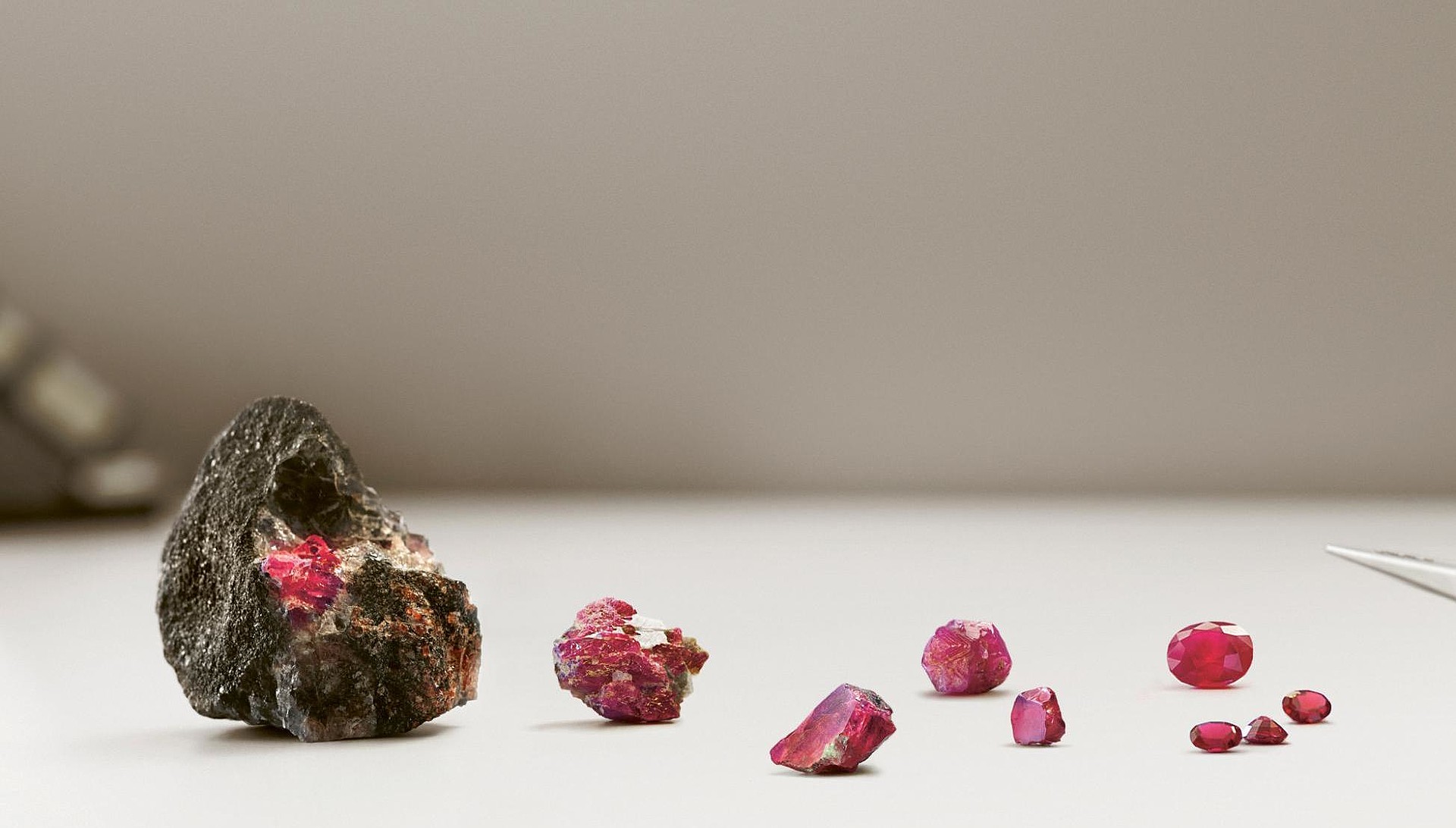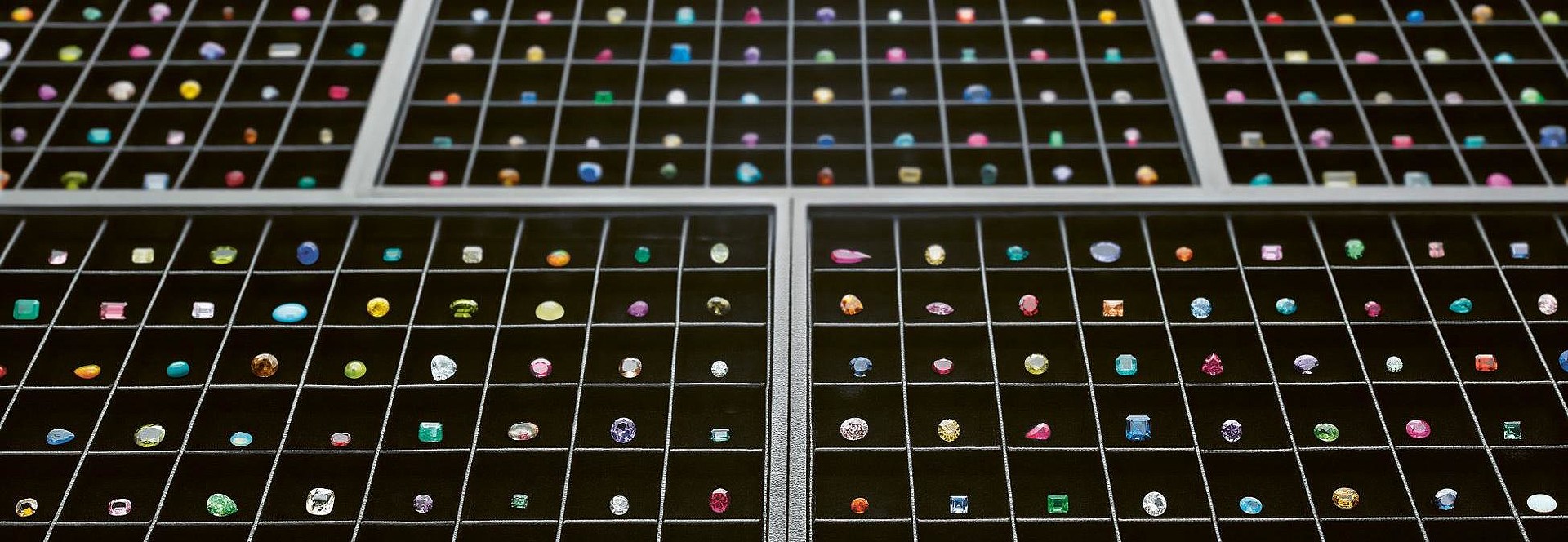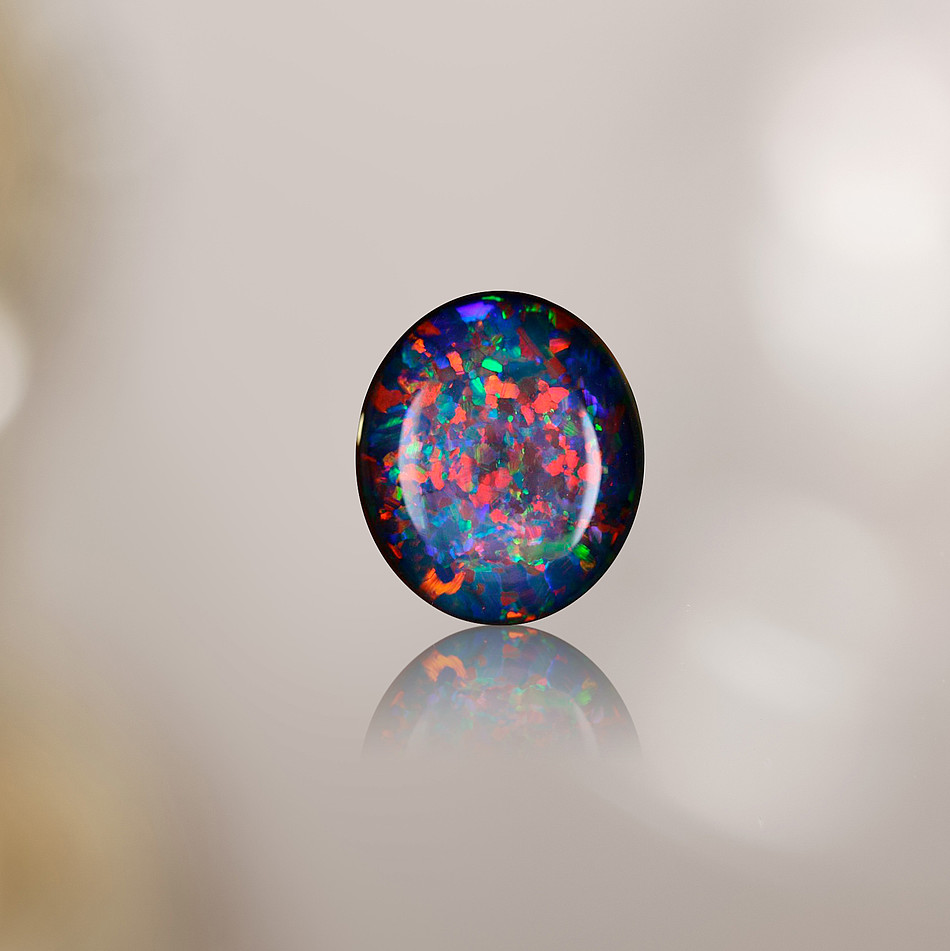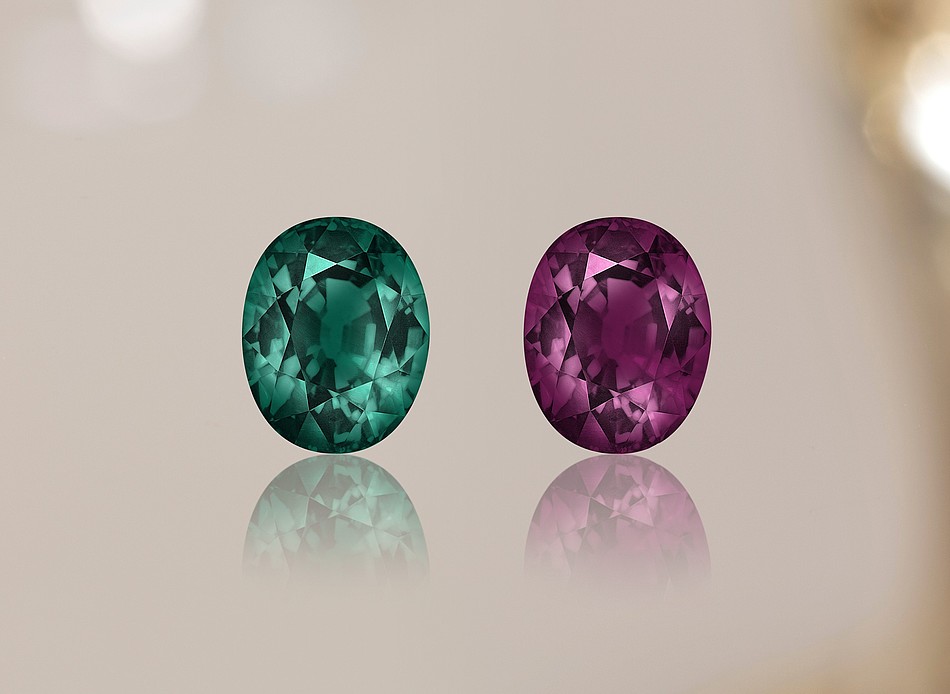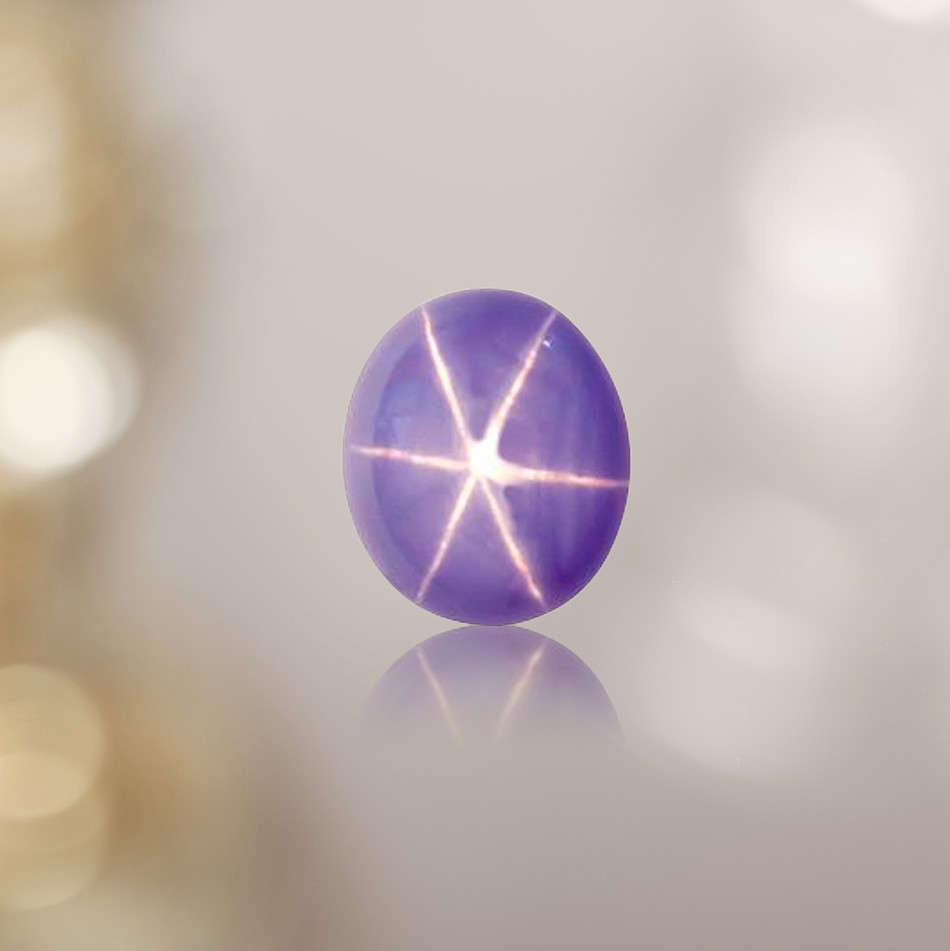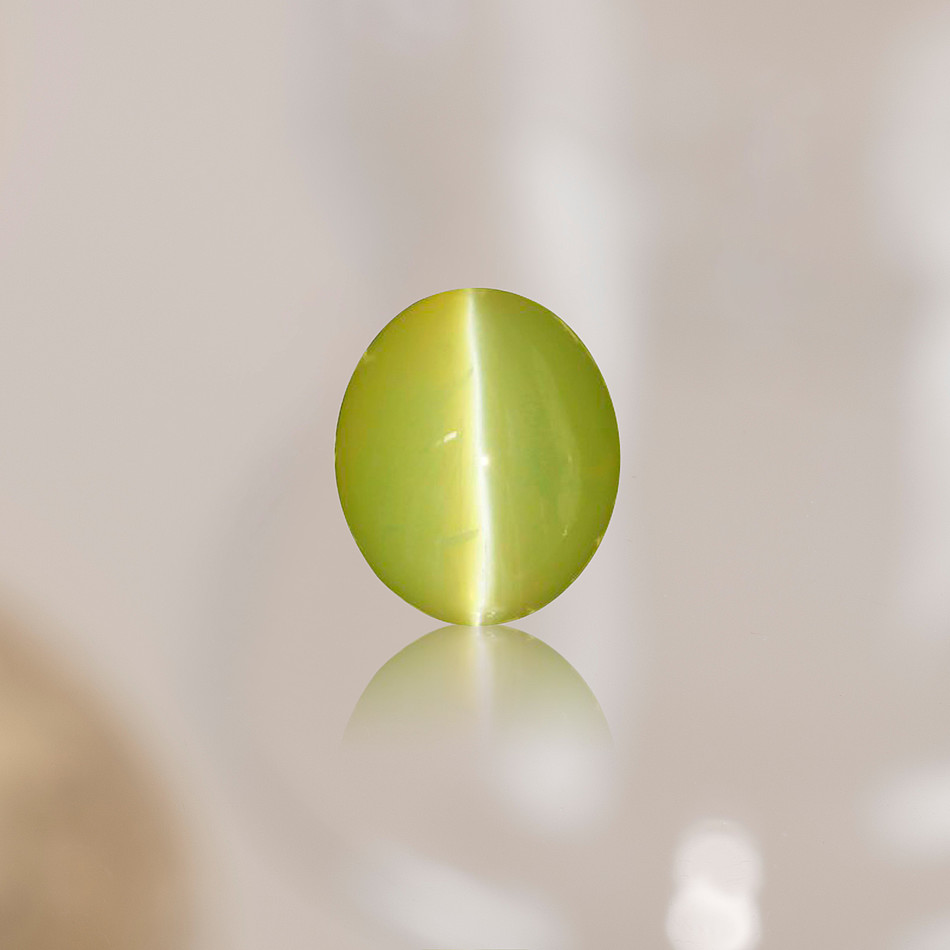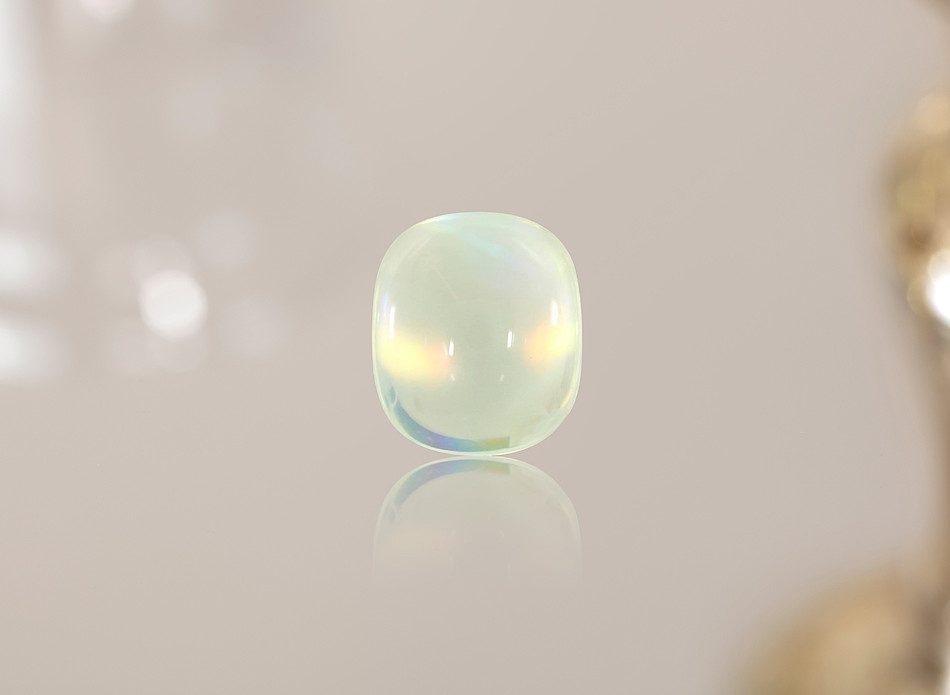Optical
Effects
Gemstones are pure marvels of nature. But some of them fascinate us even beyond their beautiful colours and brilliance. There are certain types of gemstones that are found in nature displaying optical effects that make them rare even amongst their already sought-after brethren. Discover with the House of Gübelin some of the most exciting optical phenomena and let yourself be enchanted by Mother Nature's incomparable creativity.
Iridescence
Iridescence is the beautiful optical effect that can be observed when white light is reflected off a surface and separated into a myriad of colours. This phenomenon can be observed in soap bubbles, on some beetles or butterflies and some extraordinary gemstones.
With soap bubbles, the iridescence is created by thin films of water that reflect the light, cause interference and return it to the eye of the observer in all its various colours, depending on the thickness of the layers of water. In gemstones like opals on the other hand, the effect is caused by ordered silica spheres creating interference and diffraction of light passing through the microstructures of the opal. Iridescence can also be observed in the "silk" inclusions within corundum, where tiny rutile needles scatter the light and give the gemstone a beautiful, velvet-like gleam.
In certain gemstones, iridescence has special denotations. The iridescence shown by opals for example is called the play of colours and for pearls, gemmologists speak of the orient when describing the iridescent quality of the gem's surface.
Colour-Change
Gemstones that exhibit the colour-change effect show distinctly different colours under various types of light. Probably the most famous colour-change gemstone is the rare alexandrite, a variety of the mineral chrysoberyl. In its most valuable form, this precious gemstone changes its colour from a deep, bluish green under natural light to a beautiful purple to red colour under incandescent light. This effect in the alexandrite is caused by the colouring trace-element chromium, which gives rubies their red colours but is responsible for the green hues in emeralds at the same time. Other gemstones are also known to possess the ability to change their colours. There are sapphires, garnets and diaspore varieties as well as other minerals in which this effect can be observed.
Asterism
The asterism or star effect occurs when the inclusions within certain gemstones align perfectly to focus the light that hits the gemstone in a star. Gemstones like rubies and sapphires in which the effect is caused by tiny rutile needles, are not facetted but cut "en cabochon" to unveil this phenomenon. Other gemstones like garnets, spinels and quartz can display asterism as well. The amount of rays in the star depends on the crystal structure of the gem, ranging from four to twelve rays. The asterism is one of the few occurrence where the presence of an inclusion does not detract from a gemstone's value but adds to it.
Chatoyancy
Similar to the asterism, the chatoyancy or cat's-eye effect is a rather special optical phenomenon displayed by various minerals. The name comes from the French word «chatoyer», meaning that depending on the play of the light, the gemstone exhibits one straight glittering line of light on its surface, giving the gem a strong likeness to a feline eye. The effect is caused by a series of tiny, oriented inclusions which are parallel to each other resulting in a scattering of the light. These inclusions can consist of needle-like crystals like rutile or hollow tubes within the gemstone. The gemstones most famous for exhibiting the cat's-eye effect are chrysoberyls, with cat's-eye alexandrite being particularly rare and sought after.
Adularescence
This optical effect is closely related to one particular gem, the mysterious moonstone. Adularescence can be described as a whitish blue glow caused by the structure of the stone, which is composed of two different types of feldspar varying in thickness and uniformity.


